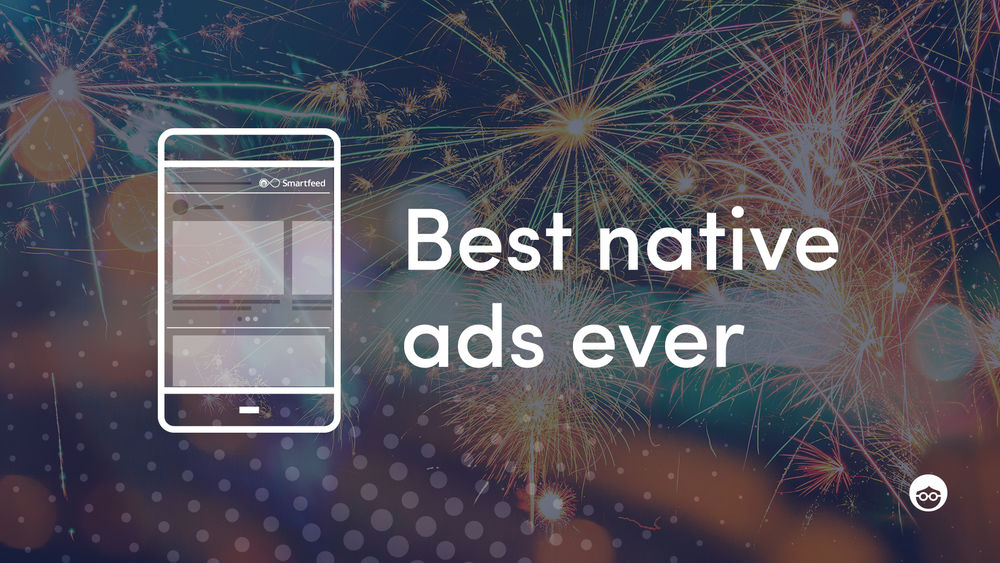Native advertising is a type of online advertising that matches the form and function of the platform on which it appears. For example, an ad on a social media platform would look like a post from a friend or family member, while an ad on a news website would look like an article from the publication.
Native advertising is a type of online advertising that matches the form and function of the platform on which it appears. For example, an ad on a social media site would look like a normal post from a friend or follower, while an ad in a search engine results page would look like a regular result. The goal of native advertising is to make the ads as unobtrusive as possible so that users don’t feel like they’re being bombarded with marketing messages.
At the same time, native ads need to be effective in order to get users to take notice and hopefully take action. There are several factors that come into play when determining whether or not a native ad will be successful. The first is relevance.
The ad must be relevant to the user’s interests in order for them to even notice it. If it’s not relevant, it will likely be ignored. The second factor is placement.
The ad needs to be placed in an area where users are most likely to see it and pay attention to it. For example, an ad for a new movie might do well on a movie review website but wouldn’t make sense on a cooking blog. Finally, the native ad needs to have a strong call-to-action (CTA).
The CTA should be clear and concise so that users know exactly what they need to do next in order to learn more about the product or service being advertised.
Native Advertising Explained + 5 Examples of Campaigns
What is Native Advertising And How Does It Work?
Native advertising is a form of online advertising that matches the form and function of the platform on which it appears. Unlike banner ads or other display ads, native ads don’t really stand out as ads. That’s intentional.
Native advertisers want their ads to look and feel like regular content because they believe that will result in more clicks, shares, and other interactions. So how does native advertising work? In short, native ads are paid placements within a piece of content.
The advertiser pays the publisher for the placement, but the ad itself is designed to blend in with the surrounding content. This can make it difficult to distinguish an ad from organic content, but there are usually some subtle cues that give it away (e.g., a sponsored label). There are several different types of native advertising, but one of the most common is in-feed unit ads, which appear in between paragraphs of text on a website or app.
Another popular type is search ads, which show up when you use certain keywords to search on Google or another search engine. And then there are recommendation widgets, which are those boxes of articles or products you see on many websites (e.g., “You Might Also Like”). Generally speaking, native advertising tends to be more effective than traditional banner ads because it doesn’t intrude on the user’s experience and interrupt their flow state.
When done well, native ads can actually enhance the user experience by providing relevant and timely information that’s presented in an unobtrusive way.
How is Native Advertising Used?
Native advertising is a form of advertising that blends in with the surrounding content on a website or app. Unlike banner ads or other forms of display advertising, native ads don’t interrupt the user’s experience; instead, they are designed to complement it. There are many different formats for native advertising, but all share one common goal: to make the ad feel like part of the natural surroundings, rather than an intrusive advertisement.
This can be accomplished in a number of ways, depending on the specific platform where the ad will appear. For example, on a social media site like Twitter, native ads take the form of sponsored tweets that show up in users’ timelines alongside regular updates from people they follow. On a news site, a native ad might be presented as an article from an external source that has been carefully selected to match the interests of the reader.
And on a mobile app, a native ad might take the form of an unobtrusive banner placed at the bottom of the screen. No matter what format it takes, native advertising should always be relevant and useful to readers; otherwise, it runs the risk of coming across as spams and being ignored entirely. When done right, however, native ads can be an effective way to reach target audiences without disrupting their overall experience.
What is Native Advertising Example?
Native advertising is a form of online advertising that blends in with the surrounding content on a website. The ad looks like it belongs on the page, and doesn’t stand out as an advertisement. This makes native ads less intrusive than other forms of online advertising, such as banner ads.
Native ads are often used to promote content, such as articles or videos. They can also be used to promote products or services. For example, a native ad for a travel company might appear on a travel blog alongside articles about destinations.
Native advertising can be effective because it doesn’t interrupt the user’s experience like other forms of advertising do. It also allows advertisers to target their audience more accurately than they could with traditional ads. However, native advertising can also be misleading if the ad is not clearly labeled as an advertisement.
This has led some people to call for stricter regulation of native ads.
How Effective is Native Advertising?
There is no definitive answer to this question as the effectiveness of native advertising depends on a variety of factors, including the specific goals and objectives of the advertiser, the platform on which the ads are being served, and the target audience. However, in general, native advertising can be an effective way to reach a wide range of consumers with relevant and engaging content. One key advantage of native advertising is that it allows brands to tell their story in a more natural way than traditional banner ads.
Native ads are designed to blend in with the surrounding content and appear as though they are part of the editorial experience, rather than interrupting it. This can make them more effective at capturing attention and fostering engagement. Another benefit of native advertising is that it can be targeted very precisely.
Platforms like Facebook and Twitter allow advertisers to serve ads to users based on their interests, demographics, location, and even previous interactions with the brand. This ensures that your ad reaches people who are most likely to be interested in what you have to say – meaning higher conversion rates and ROI. Of course, as with any form of marketing or advertising, there are also some potential downsides to consider before investing in a native ad campaign.
One potential issue is “banner blindness” – since users are so used to seeing traditional banner ads online, they may have developed a sort of “blindness” towards them and will simply scroll past them without giving them a second glance. Another concern is that if not executed carefully, native ads can come across as intrusive or even misleading, which could damage your brand’s reputation. Overall, native advertising can be an effective tool for reaching your target audience with relevant and engaging content.
However, as with any form of marketing or advertising, there are some potential risks and drawbacks that should be considered before launching a campaign.

Credit: aspire.marketron.com
What is Native Advertising
Native advertising is a form of online advertising that matches the look and feel of the website or app where it appears. It’s designed to blend in with the surrounding content so that it doesn’t feel like an ad, making it more likely to be clicked on by users. Native ads are often seen as more effective than traditional banner ads because they are less intrusive and more relevant to the user.
They can also be customized to match the look and feel of the site, which makes them more visually appealing. One downside of native advertising is that it can be difficult to track clicks and conversions since the ad blends in with the rest of the content. However, many platforms offer ways to track native advertising campaigns so that you can see how well they’re performing.
Is Native Advertising Considered Marketing
When it comes to online advertising, there are a lot of different options out there. One option that has become increasingly popular in recent years is native advertising. So, what exactly is native advertising?
Basically, it’s a form of online advertising that blends in with the content on a website or app. The goal is to make the ad feel like it’s part of the natural experience on the site or app, rather than feeling like an interruption. Native ads can take many different forms, but some common examples include sponsored articles, promoted tweets, and recommended videos.
So, is native advertising considered marketing? There’s no definitive answer to this question since it can be interpreted in different ways. Some people might say that native ads are simply a new type of marketing tactic, while others could argue that they go beyond marketing and into the realm of publishing or editorial content.
At the end of the day, it’s up to each individual to decide whether they consider native advertising to be marketing or not. However, there’s no doubt that native ads can be an effective way to reach and engage with your target audience.
Native Advertising Platforms
What is native advertising? Native advertising is a type of online advertising that matches the form and function of the platform on which it appears. In many cases, it takes the form of an article or video that is produced by the advertiser and designed to look like editorial content from the site on which it appears.
Why is native advertising effective? Native advertising is effective because it does not interrupt the user’s experience with a hard sell or obvious advertisement. Instead, it provides relevant information that blends in with the surrounding content.
This makes users more likely to pay attention to the message and less likely to tune it out as they would with a traditional banner ad. What are some popular native advertising platforms? There are a number of popular native advertising platforms, including Taboola, Outbrain, Yahoo! Gemini, and Nativo.
Each platform has its own strengths and weaknesses, so advertisers should carefully consider their options before choosing one.
Native Ads Vs Display Ads
When it comes to online advertising, there are two main types of ads that you can use to promote your products or services: native ads and display ads. So, what’s the difference between these two types of ads? And which one is right for your business?
Native Ads Native ads are designed to blend in with the content on a website or app. They usually match the look and feel of the site or app they’re appearing on, which makes them less intrusive than other forms of advertising.
Native ads can be effective because they’re not as easily ignored as banner ads or other forms of display advertising. Display Ads Display ads are the more traditional type of online ad.
They typically appear in banner form at the top or bottom of a web page, or in a sidebar. Display ads can be effective if they’re well-designed and placed in an appropriate location on a website. However, they can also be easily ignored by users if they’re not interested in what’s being advertised.
Google Native Ads Example
Google native ads are a type of online advertising that blends in with the surrounding content on a webpage. The ads are designed to look like they’re part of the page, which makes them less intrusive and more user-friendly than traditional banner ads. Native ads can be used on websites, apps, and even in email newsletters.
They come in all shapes and sizes, but all follow the same basic principle: to blend in with their surroundings. Google’s native ad platform is called Google AdSense. AdSense allows publishers to place native ads on their website or app and earn money from them.
The publisher gets a percentage of the ad revenue, while Google keeps the rest. AdSense offers a wide range of options for customizing native ads, so they can be made to fit seamlessly into any website or app design. Publishers can also choose what types of businesses they want to advertise on their site, so they can ensure that the ads are relevant to their audience.
There are many benefits to using Google native ads. For publishers, they offer a way to make money without having to sacrifice valuable space on their website or app for banner ads. And for advertisers, native ads provide an unobtrusive way to reach potential customers who are already interested in the type of product or service being offered.
Native Ads Google
What are Native Ads? Google’s Native Ads are ad units that blend in with the content on your website. They match the look and feel of your site, making them more user-friendly and less intrusive than traditional banner ads.
Native Ads can be used to promote products or services that are relevant to your audience, and they can be customized to match the look and feel of your website. Why Use Native Ads? Native Ads are a great way to promote products or services without being intrusive.
They blend in with your content, so users are more likely to notice them. And because they’re less disruptive than banner ads, they can improve the user experience on your site. How to Use Native Ads Google ?
If you want to use Google Native Ads, you’ll need to sign up for an account with AdWords.
What is Native Advertising And Why is It Controversial
Native advertising is a type of online advertising that is designed to blend in with the surrounding content on a website. It can take many different forms, but is often easily identified by its similarity to the editorial content on the site. This type of advertising has become increasingly popular in recent years, as more and more brands look for ways to reach consumers without being intrusive or disruptive.
However, native advertising is not without its critics. Some argue that it blurs the line between editorial content and ads, making it difficult for consumers to know what they’re seeing. Others believe that native ads are simply too effective, and that they have an unfair advantage over other types of online advertising.
Whatever your opinion on native advertising, there’s no denying that it’s here to stay. As we continue to consume more and more content online, brands will only become more reliant on this type of marketing.
Conclusion
Native advertising is a form of online advertising that matches the form and function of the platform on which it appears. Native ads are often found in social media feeds, search engine results pages, and content recommendation widgets. Native advertising is effective because it does not interrupt the user’s experience with an intrusive ad.
Instead, native ads are designed to blend in with the surrounding content, making them more likely to be seen and clicked on by users. Due to its effectiveness, native advertising is growing in popularity among advertisers. In fact, spending on native ads is expected to reach $85 billion by 2021!



